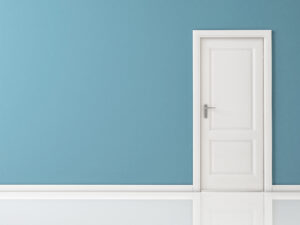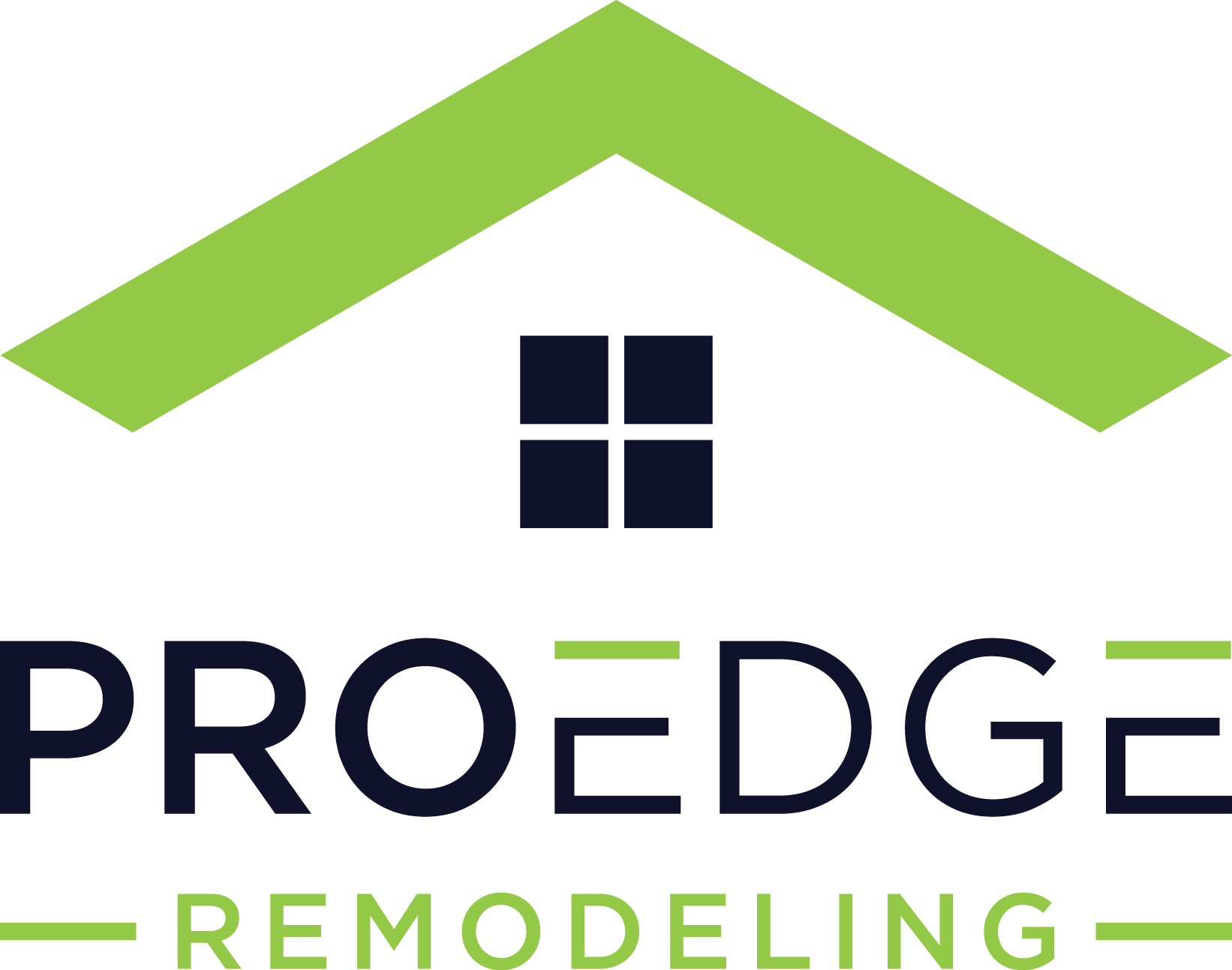Guide to Replacing Doors in Your Home

*Updated on October 8th, 2024
The doors on your home play a bigger role than you might realize. Not only do they add significant curb appeal by serving as a focal point of your home’s exterior, but they also set the tone for your property’s style. Whether it’s a bold front door color or a sleek modern design, the right door can enhance the overall look of your home, while the wrong one can diminish its charm.
Beyond aesthetics, doors serve a critical function in protecting your home from outdoor elements. A high-quality front or back door can provide insulation, helping maintain a comfortable indoor temperature and boosting energy efficiency. It also acts as a first line of defense against weather conditions, whether it’s harsh winds, rain, or extreme temperatures.
If you’re considering replacing the doors in your home, here are some key factors to keep in mind.
When do you Need New Exterior Doors?
There are many reasons to consider new exterior doors, including the following:
1. The Door Doesn’t Open or Close Properly
If your door sticks in the winter and flies open in the summer, it may have gaps that make it tougher to open and close. This is bad not only for the door but also for your home. If there are gaps, it means the outdoor air gets into your home, making it more difficult to keep warm or cold.
If the door is misaligned or warped, it’s best to replace doors in your home rather than try fixing them.
2. Weathered Doors
Doors naturally have wear and tear from expanding and contracting in different weather elements. Over time, this makes the doors less effective. In addition, they may crack, warp, or have gaps that let warm and cold air into the home.
You might notice the door has become uneven, or you feel a cold draft coming from it when you walk past it. These are signs of weathered doors that should be replaced.
3. Loose Hinges
A door loose on its hinges might be repairable, but a door replacement is best if it requires repairs too often. When a door is loose on its hinges, it becomes difficult to use and could even become a security threat.
Lack of Security
Your doors protect your home from intruders. If it’s loose, has gaps, or is easy to maneuver, you put your home at risk of security threats. You want a door that’s difficult to maneuver and uses today’s latest technology to keep intruders out.
Rotting or Mold
Your exterior doors are exposed to all weather elements, including water. So if the frame or door rots, you could expose your home to mold growth, not to mention the door won’t be as secure.
If your home has a sliding glass door or any door with windows, check between the glass panes to determine if there is moisture and the risk of mold or mildew growth.
Outdated Doors
The final reason for replacing your doors is to update outdated doors. If you live in an old home or had a unique door that fit the trends at the time but is now outdated, consider replacing it.
Even if your door doesn’t have functional issues or show signs of wear and tear, a new door can increase your home’s curb appeal and potentially its value.
Increased Noise
If you notice more outside noise entering your home than before, it may signal that your doors are not effectively blocking sound. New doors can help improve noise insulation.
Drafts and Energy Loss
If you feel drafts around your doors or notice fluctuating energy bills, it may indicate poor insulation or worn weather stripping. Replacing your doors can improve energy efficiency and comfort.
Types of Exterior Doors
When choosing your exterior doors, there are many types to consider, including the following.
Pre-Hung Doors
Pre-hung doors are the least expensive option and the easiest to install. A pre-hung door is already on its frame and hinges and has weather stripping. The door usually comes with all the hardware, and after the removal of your existing door and frame, it is ready to install.
Slab Doors
If your existing door frame is intact, you may just need a slab door, which is the door only. This works well on newer homes that want a better or more updated door. Everything comes separate from the door, including the hinges and hardware.
Fiberglass Doors
If your front door gets a lot of traffic, fiberglass doors are a good option. They can withstand most weather, are energy efficient, and are dent resistant. In addition, you can have them stained or painted to match your home’s style and add curb appeal to your home.
Wood Doors
Wood doors work well on homes that aren’t exposed to a lot of bad weather elements. A wood door may add an elegant look if your porch is covered. Wood doors are much heavier than other options and are dent resistant. You can get solid wood doors or have windows installed in them.
Iron Doors
Iron doors provide the utmost security because of their weight and are incredibly beautiful. They are weather resistant and last much longer than most doors, but they are more expensive. You can have highly ornate iron doors or simple designs.
Steel Doors
Steel doors are great for homes where security is an issue, or you worry about weather issues. Steel doors are highly energy-efficient and can take on the look of any other door type, including wood. They are durable and budget-friendly but aren’t dent-resistant, so keep that in mind.
The Cost to Install New Doors
The cost to install new doors depends on where you live and the type of door. On average, front doors cost $398 – $998 to install, and patio doors cost $498 – $1,298.
The factors that affect replacing doors include:
- Are you replacing all parts of the door, including the frame, and do you need the old frame removed?
- What type of door are you replacing? Patio doors tend to cost more than front doors.
- Are you installing single or double doors? Double doors cost more.
Considerations When Replacing Doors in your Home
When replacing doors in your home, consider these factors.
1. Your Budget
Your budget is the most important factor, as the price of doors can vary quite a bit. Don’t forget about labor too. If you buy the door separately, you’ll have the cost of the contractor to install the door, plus any accessories you want.
2. Installation
It’s best to have a licensed contractor measure your door to ensure you buy the right door. If you buy a door that’s too large or small, it could cause issues with installation. So having it done right the first time is essential. Additionally, a licensed contractor can provide valuable insights on the best door options that suit your space and style preferences. This not only simplifies the purchasing process but also makes installing pet doors made easy, ensuring your furry friends can come and go without any hassle. Overall, investing in professional measurement and advice can save you time and frustration in the long run.
3. Materials
Choose your door materials wisely. Consider how long you want the door to last, your desired look, and any concerns, such as security, weather, or dent resistance.
4. Style
The door style should match not only your home but also the area. While you don’t have to copy your neighbors, you should keep the door similar to the style others have to keep your curb appeal and home value high.
5. Energy Efficiency
Look for doors with high energy efficiency ratings. Insulated doors can help reduce energy costs and improve comfort in your home.
6. Size and Fit
Measure the existing door frame accurately to ensure the new door fits properly. Consider whether you need standard sizes or custom options.
7. Maintenance Requirements
Different materials require varying levels of maintenance. Consider how much upkeep you’re willing to perform in the future.
8. Warranty and Lifespan
Check for warranties that cover defects or damages. Consider the expected lifespan of the materials you choose to ensure you make a wise investment.
Accessories for Doors
Doors have more accessories than you might realize, and since they are a big part of your home’s curb appeal, they deserve attention.
Accessories for doors can include things that help with their security and enhance their looks.
For example, security accessories include locks and deadbolts, peepholes, and heavy doors that cannot be maneuvered.
Curb appeal accessories include:
- Windows
- Décor
- Blinds
- Grilles
- Sidelights
- Door knockers
- Panels
Should You Hire a Professional or DIY Door Replacement?
If you love DIY projects, replacing doors may be something you want to leave to the professionals. However, unless you are an expert in door replacement, you risk many things going wrong, including the following.
- The door not fitting properly in the frame
- The door hitting things inside your home
- The door sticking when opening or closing it
- Gaps in the door that don’t protect your home from the weather elements
- Water getting into your home and causing mold growth
- Scratches or dents from not knowing how to properly install the doors
- Voiding the warranty for improper installation
FAQ
Is it worth replacing interior doors?
Exterior doors affect your home’s curb appeal and value, but what about interior doors? If you’re remodeling your home or your interior doors are outdated, replacing them can be worth it. They can add to your home’s aesthetic appeal and value, especially if you install upgraded doors.
Is it hard to replace a door by yourself?
You can easily replace a door by yourself if you’re replacing it with the same door (just newer) or one that you know has the same measurements, including the frame. Pre-hung doors are the easiest to DIY, but typically installing doors is best left to the professionals.
How many hours does it take to replace a door?
Replacing a door can take a few hours to an entire day. How long it takes depends on the work required. For example, it can take longer if you need a new door frame and/or the rough opening needs adjusting.
Final Thoughts
Replacing doors in your home can give your home a new look and may increase its value. To get the most bang for your buck, opt for a door that increases your home’s curb appeal while providing other functions, such as greater security or protection from the weather.
Additional Door Resources
- Time for a New Front Door?
- Get to Know the Different Types of Door Hinges
- Guide to Painting Doors
- 6 Types of Doors for Your Home

Anna has over six years of experience in the home services and journalism industries and serves as the Content Manager at MyHomePros.com, specializing in making complex home improvement topics like HVAC, roofing, and plumbing accessible to all. With a bachelor’s degree in journalism from Auburn University, she excels in crafting localized, comprehensive guides that cater to homeowners’ unique needs. Living on both coasts of the United States has equipped her with a distinctive perspective, fueling her passion for turning any house into a cherished home through informed, personalized decision-making.
Connect with top-rated local contractors who can help you with siding, roofing, HVAC, windows, and more. Get free quotes from verified professionals in your area today.








